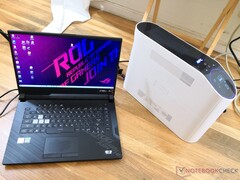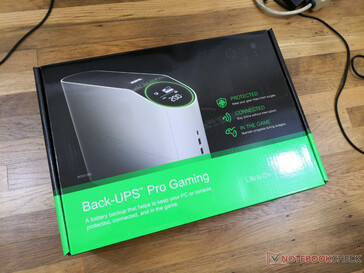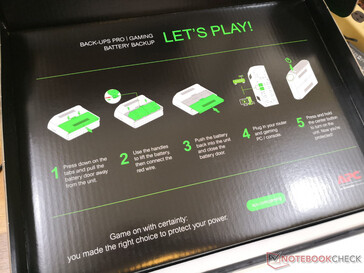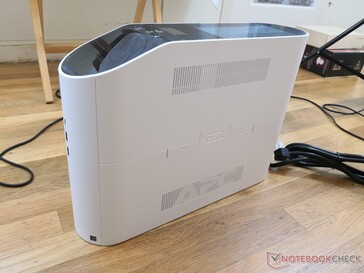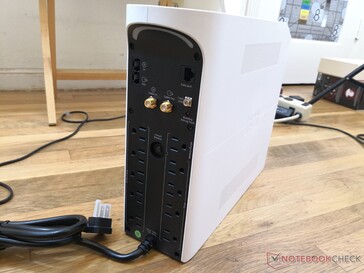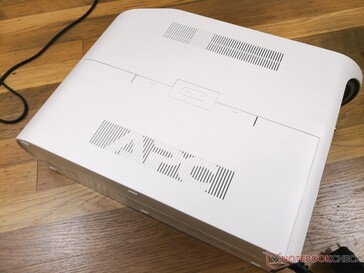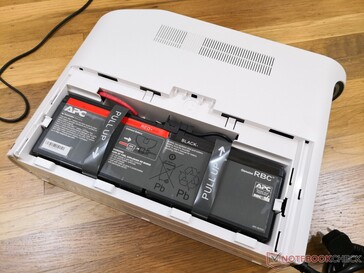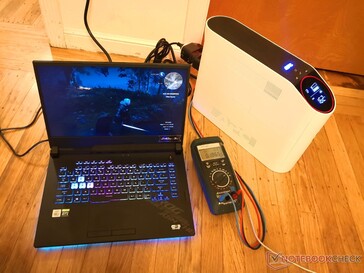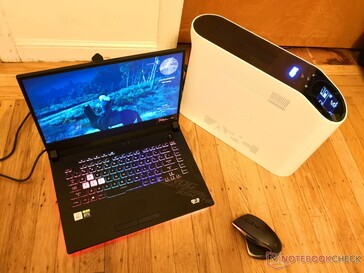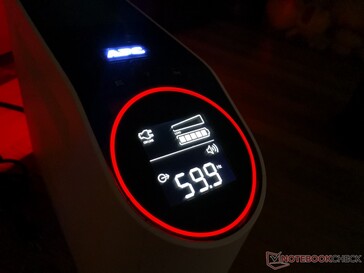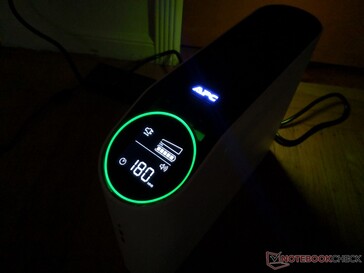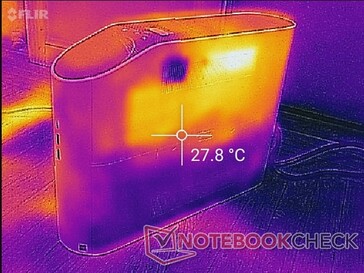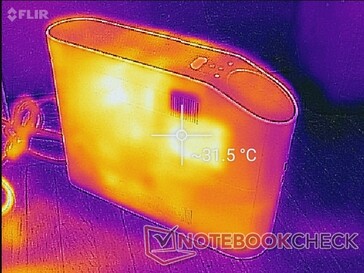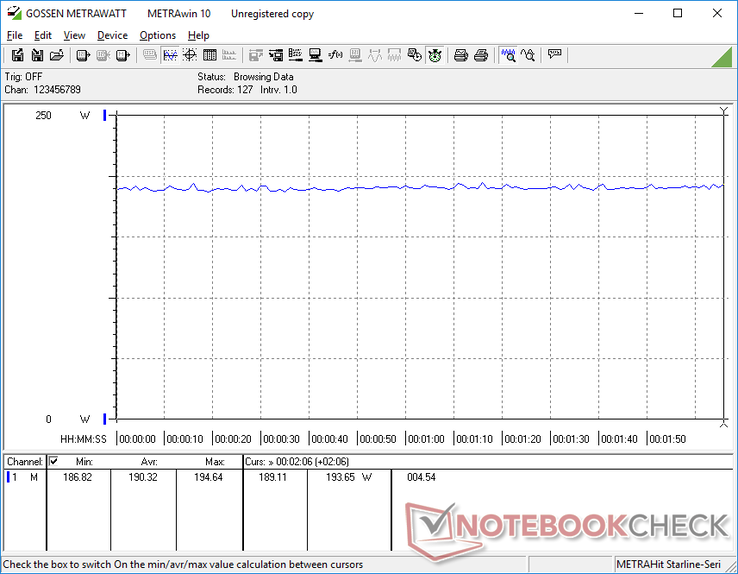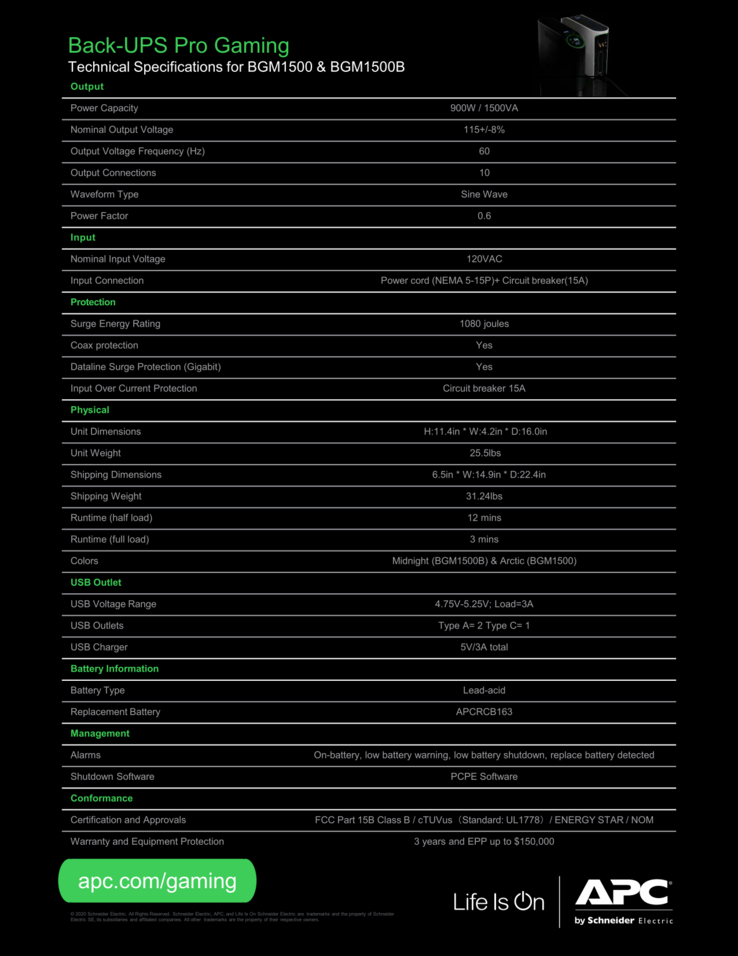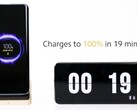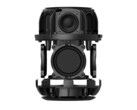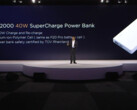The APC Back-UPS Pro Gaming combines a traditional surge protector with a lead acid backup battery and wraps them in an attractive matte plastic chassis. Though it’s marketed primarily to gamers, the unit can also be used for anything outside of the typical PC, router or gaming console. The manufacturer has sent us a sample to test for our impressions on the device.
The first thing we noticed after opening the box was the immense weight of the unit. At 11.6 kg (25.5 lbs), the UPS is much heavier than a similarly-sized mini PC tower because of the lead battery inside. The weight itself isn’t a problem, but the lack of a carrying handle makes the unit more difficult to transport than it needs to be. The smooth round chassis design only exacerbates this issue.
Once out of the box, the manual instructed us to connect the battery terminals before powering on the unit since the battery ships disconnected for safety reasons. The battery hatch is a bit difficult to slide off because, again, the chassis surface is slippery with poor grip.
The front of the UPS tower houses two USB-A and one USB-C charging ports for charging purposes. Unfortunately, total output is limited to only 15 W meaning that the USB ports are not compatible with Quick Charge. The rear of the tower is home to the rest of the ports including ten surge protector ports, two coaxial ports, ground screw, Ethernet in/out ports, USB/serial port, and a circuit breaker reset button. We would have preferred a wider spacing between the tightly packed AC ports to reduce the chances of fat AC adapters blocking adjacent ports. All the other ports, for example, have more than enough space between them.
For our test device, we decided to use the 15.6-inch Asus ROG Strix G15 G512LW equipped with the Core i7-10750H CPU and GeForce RTX 2070 GPU. It’s a demanding laptop for sure with consumption rates as high as 190 W when gaming to make it a good candidate for our purposes.
Before connecting the laptop, we powered on the UPS to check out its screen and UI. We noticed a small level of electronic noise or coil whine from our unit at this point in testing, but it was only audible when placing an ear near the unit. The screen would show real-time readings for load in watts, load in percentage of the maximum sustainable by the UPS (900 W), output voltage, input voltage, volt-amp, and estimated battery runtime which are all very helpful. However, the display could have definitely benefited from more buttons because you’ll have to cycle between most of these readings one by one and in order.
After connecting our Asus laptop, the display on the UPS would automatically power on to show the real-time readings in increments of about 3 seconds before going blank again. The screen would turn back on if it detects any significant changes in power consumption or voltage such as when launching or closing a game. Annoyingly, there appears to be no way to prevent the screen from automatically sleeping as far as we can tell.
As for the accuracy of the power readings on the UPS, we attached our Gossen Metrahit TRMS multimeter in between our Asus laptop and UPS to see how their readings might compare when running Witcher 3. Interestingly, the APC unit appears to underreport by as much as 25 W (187 W vs. 162 W) and this would remain consistent throughout our testing. Keep in mind that any loads must be connected to one of the six AC ports on the APC unit that supports UPS or else the readings will not register on the display.
Next, we wanted to see if the UPS could maintain its uninterrupted power output when switching between AC and battery power by disconnecting it from mains while running Witcher 3 on our laptop. Indeed, our power consumption graph below shows no dips or spikes at the one minute mark when we initiated the power switch.
The next question becomes how long users can expect the battery to last. In our case, the display reported 28 minutes on a full charge to maintain the ~186 W load of our Asus laptop. In reality, however, total runtime turned out to be closer to 35 minutes. Note that the internal UPS fan will automatically kick in when on battery power, but it is thankfully low-pitched and quiet in a typical office environment.
Charging the battery from empty to full capacity is extremely slow. Be prepared to wait about 16 hours to fully recharge the battery.
The APC Back-UPS Pro Gaming performs as advertised, but its numerous auxiliary features could use some fine-tuning and quality-of-life enhancements. It feels as if the manufacturer focused heavily on the aesthetics and build quality of the gaming-centric UPS while usability, UI, and software all took a backseat. Sure, it blends in well with a modern gaming PC setup, but its UI and clunky buttons belong on a wristwatch - not a UPS catered to enthusiasts. We highly recommend installing the PowerChute software as a result since it allows you to monitor and control some features of the UPS remotely without having to deal with the limited buttons on the unit. More widely spaced AC ports, an integrated carrying handle, USB Quick Charge support, and the ability to turn off the bright white APC logo would be great to see on future revisions.
The Back-UPS Pro Gaming BGM1500 is now shipping for $259 USD.




